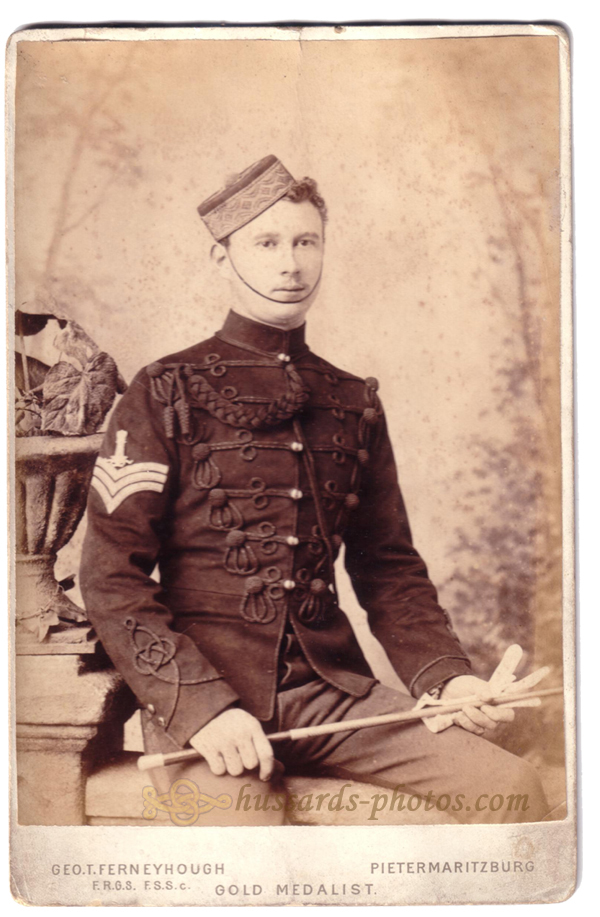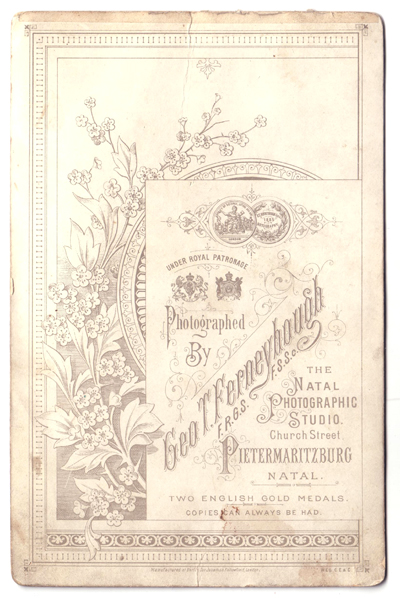| This
Sergeant is showing us a beautiful "Sergeant Arm Badge"
displaying the arms of the 11th Hussars. Note how the colour of
the trousers (crimson) differs from the dark blue of the tunic.
The plaited busby lines pattern is typical of the 11th Hussars -
although not exclusive.
The
garrison in Pietermaritzburg is located South-West of the city,
overlooking it from higher ground ; Fort Napier was built in 1843
and remained home to Imperial troops up to 1914.
The 11th
Hussars left Aldershott for South Africa in July 1890. Prior to
that departure they were inspected (along with the 16th Lancers)
by the Prince of Wales on June 27. He adressed the officers
of the two regiments after his inspection, "expressing the
great pleasure it gave him to see their regiments in such a state
of efficiency, and wishing all a safe return at the completion of
their term of foreign service".
The 11th
Hussars boarded the troopship Himalaya at Portsmouth and left for
South Africa on July 18 1890, heading for Natal. Due to an
outbreak of cholera at Natal, the ship was diverted to Cape Town
where she landed on August 26. The regiment reached Pietermaritzburg on foot.
They
stayed there until 1892. They were
relieved by the 3rd Dragoon Guards who stayed there until 1895 -
when another Hussar regiment, the 15th, settled for four years
(1895-98). On
october 24 1892, the 11th Hussars left Durban on board the Indian
transport Clive, sailing for Kurrachee, on their way to their next
garrison at Sialkot (Bengal).
|


